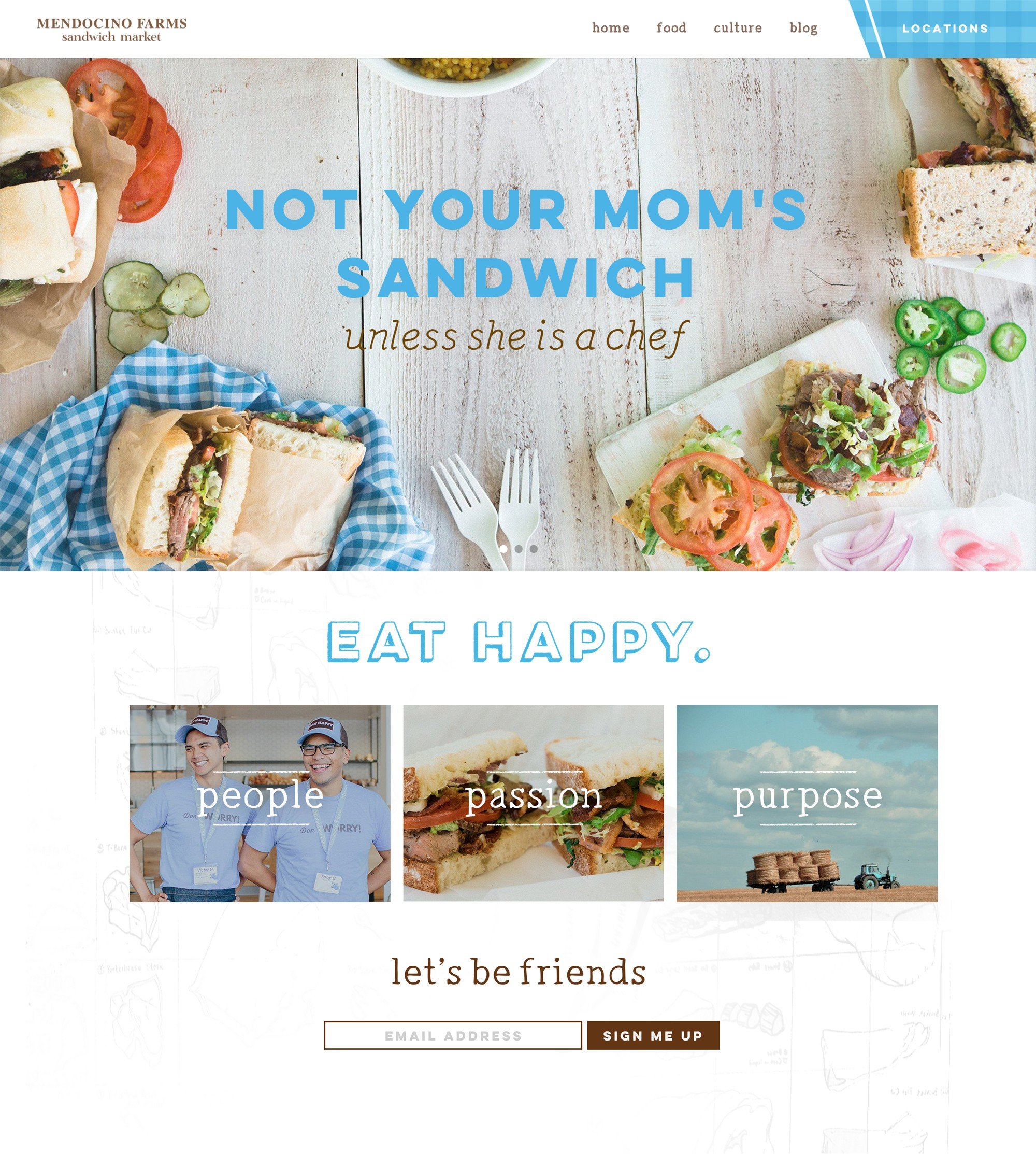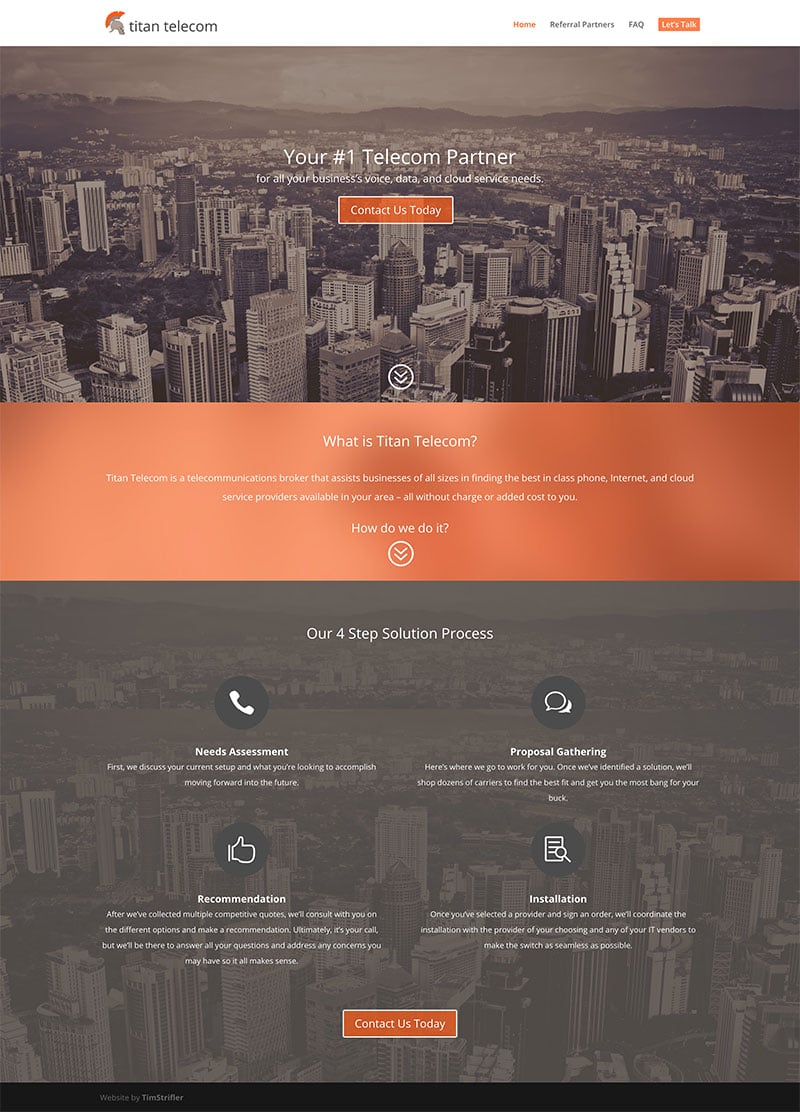7 Reasons to Have a Contact Form on Your Website
Should I have a contact form on my website?
This is one question that continues to get asked time and time again. The internet isn’t exactly new, but there still is an unclear standard on what is best practice. While you may find some arguments for not having a contact form— spam bots being the main culprit (easily alleviated with captcha), there certainly are a lot more reasons to have a contact form. I’m going to lay out 7 of the main reasons and then you can make the decision for yourself what is best.

1. Contact Forms Make Your Website More User-Friendly
This hits the top of my list for one simple reason: it’s the most important! The user-friendliness of your website should always be the at the top of your priority list, and a contact form definitely helps you in this area. When a user lands on your website they want to be able to navigate your pages with minimal effort, and certainly without having to do any thinking. If they need to contact you, adding in extra steps for them to achieve this will only result in impatient users that may result in them giving up contacting you altogether, and that’s rarely a good thing. Great web design removes barriers for your users, and adding a contact form is great web design for this reason.
2. Contact Forms Let You Lose The Published Email Address (and lose the spam too)
Typically, the alternative to having a contact form is to have an email address published on your contact page. “Email us at [email protected] for more information….” This can be bad practice for a number of reasons, but most of all is the spam. There are bots that troll the internet harvesting email addresses from any website they can find. Your email then gets blasted with all sorts of irritating spam. No one likes to get spammed. It’s a time waster, which is just bad for business.
3. Contact Forms Keep a Record of All Entries
Most contact forms will store all entries in a database for you to retrieve whenever you’d like. This can be useful for many obvious reasons, but it’s especially convenient to have all inquiries in one place. You can also typically export this information into a CSV file for sorting and tracking. It’s convenient and efficient, and much better than sifting through your email inbox looking for that one potential customer who emailed you weeks ago. Lastly, if you want to see what your conversion rate is (if your main website goal is for people to contact you), you can easily do so by seeing how many entries to your contact form you have.
4. Contact Forms Get You Answers On the Front End (And Saves Everyone Time)
If your using a simple email address for your users to get in touch with you, then it typically takes a few back and forth emails for you to get the answers you need to see if you’re able to help them, or how best to help them. If you use a contact form, you can ask those questions in a form field and get the answers right away, saving everyone time. You can even take it a step further with a premium form plugin and have the form go to different people based on the answers the user provides. For example, if the user has a billing question you can have the form send the email to your accounting person, if it’s a support question it can go to your support team, and so on. Or for another example, let’s pretend you’re an interior designer that only works with high-end clientele. You can ask the user their budget in a contact form, and if it’s below your project minimum you can kindly tell them so before they submit the form.
5. Contact Forms Can Help You Grow Your Subscriber List
In the world of internet marketing, a well scrubbed email list is gold. Whether you’re selling a product or service online, or have a local restaurant or store, an email list to market to can be extremely crucial in helping you grow sales. There are many ways to grow an email list, but an added method can be done with your contact form. We’ve all seen this before—You’re filling out a form to contact a company, or maybe you’re buying a product, and right before you hit that submit button there’s a check box that states, “Subscribe to our email newsletter.” This can easily be done with your contact form, increasing your subscriptions in a non intrusive way.

6. Contact Forms Can Send an Auto-Response to Users
When a user contacts you through your website, it’s nice to let them know that you received their message. A contact form makes this a breeze to achieve. It’s also an added way to get your business name (and your branding) in front of a potential or existing customer. It’s almost like a takeaway, brochure, or business card. It’s something they’re able to see later to remind them of the interaction. Having an automated email response at the top of a user’s inbox is a much better reminder that they contacted you then having to look in their sent email box (because how often do you actually look at your sent mail?).
7. Contact Forms Let You Keep Your Whole Team in the Loop
Contact forms (or a robust form at least) let’s you send auto responses to multiple people, or even your entire team. Maybe you offer priority support to customers that are willing to pay for it. Well when they need support, it’s crucial that everyone that’s on duty get’s notified so someone can tackle the issue as soon as possible. Not only does this ensure a rapid response, but it help keeps everyone in the loop so the whole team knows what’s going on.
BONUS: Contact Forms Don’t Have to Be on Static Pages (Use a Popup)
The most common way to use a contact form is on a “Contact Page.” While this is simple, it can sometimes not be necessary. We live in a world where everyone wants everything now. So if someone wants to get in contact with you, don’t make them wait for the Contact Page to load! Especially if your visitor is on mobile (with a slower connection), you don’t want to make them wait. Instead, use a popup with a contact form that can be accessed from anywhere on the website with a click. For example, you can have “Contact” in your main menu, but instead of it going to a separate page, it opens up a popup with a contact form.
If you’re using the Divi Theme (which we highly recommend), you can take a look at our Divi Popup plugin. It allows you to create any popup imaginable using the Divi Builder. So creating a contact form popup as described above is extremely simple. 🙂
Conclusion
If you’ve read this entire post, then you can see that there’s more than enough reasons to put a contact form on your website. If you need just one more reason, then WHY NOT! It’s so easy these days to build a contact form, so why not have the added convenience for your users (as well as all the reasons listed above). On a lot of our websites, we actually put a contact phone number, contact email, AND a contact form. This gives the user the choice to choose the method that makes the most sense for them; supporting number one in our list— a better experience for your users.
What do we recommend for a form plugin? We use, and put on all of our websites, Gravity Forms. If you’re not familiar, Gravity Forms is the leading form plugin for WordPress. It does cost money, but very well worth it.
Have a question about this post? Don’t hesitate to reach out to us using our contact form 😉

Let's Talk About Your New Website
Drop us a line anytime, and we would be happy to discuss the details of your new website.




